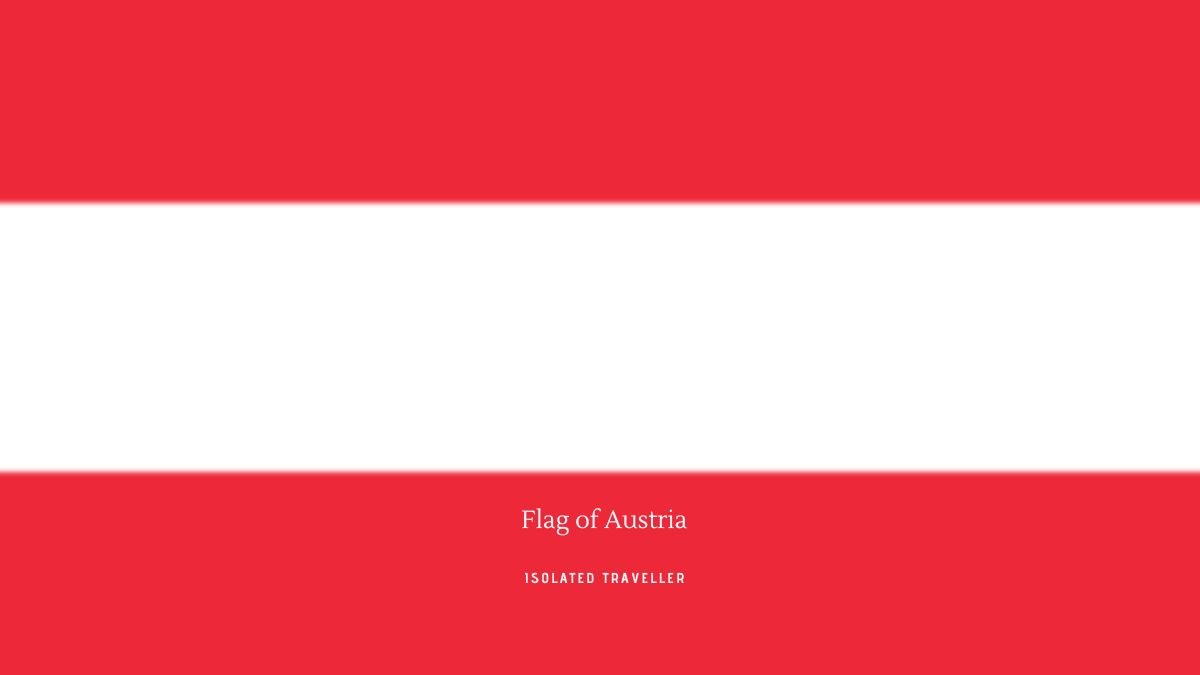Flag of Austria
The flag of Austria has three equal horizontal bands of red, white, and red. The flag is considered one of the oldest national symbols, with its first recorded use in 1230. The Austrian triband originated from the arms of the Babenberg dynasty. Differently from, for example, the black-and-yellow banner of the Habsburgs, the red-white-red flag was very early associated not with a reigning family or monarch, but with the country itself.
Other than serving as the flag of Austria since 1230, it was adopted as naval ensign and flags of the Grand Duchy of Tuscany and Duchy of Modena and Reggio in the 18th and 19th centuries respectively, as both were ruled by cadet branches of the House of Habsburg.
The flag of Austria was introduced only after WW1 and again in WW2 before that it was a sea battle flag. The horizontal red-white-red is said to represent the blood of a duke on his white robe

History of the Austrian Flag
The nation of Austria has been around for hundreds of years, but the Austrian flag has changed surprisingly little over that time. Only two Austrian flags have seen significant use, one that represented the nation and people of Austria itself, and one that came from the colours of the ruling Hapsburg dynasty.
The Flag of the Austrian Nation
The current and oldest of the two Austrian flags is a horizontal, bicolour triband of red and white. It is sometimes shown with the Austrian coat of arms in the centre.
The red and white pattern originates from the Babenberg dynasty’s coat of arms, which was red and silver. Legend says that this pattern originated with Duke Leopold V when he fought in the Siege of Acre during the Third Crusade. The legend says that he went into battle wearing a white surcoat, which got stained a deep shade of red during the fighting. Only the part that was covered by his belt remained clean. He saw the blood-red with a clean white stripe when he changed his clothes after the battle, and he thought it was so striking that he took it as his personal heraldry.
Whether that story is true or not, the pattern remained with Austria even after the Babenberg dynasty died out. Every successive dynasty that ruled Austria adopted the colours when they took the throne and eventually they came to be associated with the nation rather than its kings.
The Flag of the Hapsburg Dynasty
The other Austrian flag is a simple bicolour of black and yellow, which comes from the banner of the Holy Roman Empire. It was technically the flag of the Hapsburg dynasty rather than the nation of Austria, but it became associated with Austria because that was the centre of the Hapsburg empire. The Hapsburg family often used the two flags together, so that they could emphasize Austria’s importance at the same time that they emphasized their broader rule. This flag fell out of use after the Hapsburg dynasty was removed from power and the nation of Austria-Hungary was broken up into its constituent parts, which happened after the first world war.


